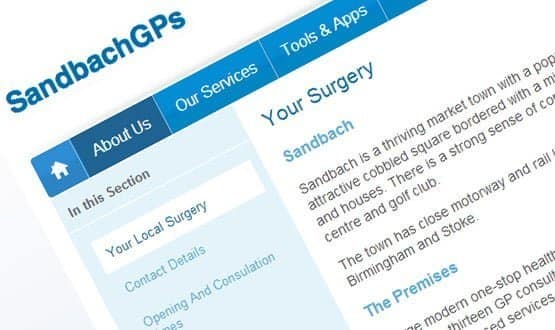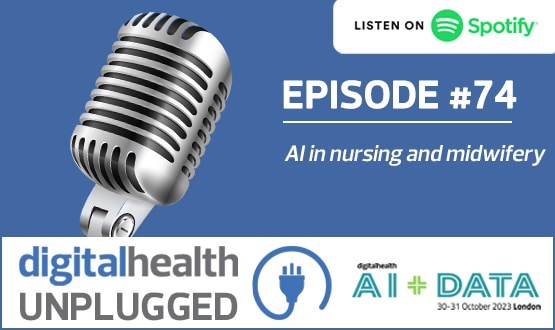Another view: Neil Paul
- 23 January 2013

We were then asked what we wanted to do about the GP system upgrade. We felt that, in several key ways, Emis Web wasn’t as finished as we would have liked it to be, so we made a decision to go as late as possible in our primary care trust’s roll-out.
Where are we know?
So, where are we up to? The good news is that the transition team from Emis and Cheshire ICT seem to have got their act together and practices report a smooth process.
The bad news is that I am concerned we are going to end up with a system that doesn’t do what we want it to do.
The last time I wrote about why this was the case, I made it clear that I was not criticising Emis as a company, or slating the Emis Web product.
What I was concerned about were problems that could arise because of the way that Emis Web is being deployed locally to GP practices and the way Emis Community Web is being deployed locally to our district nurses.
In my opinion – and that of my clinical commissioning group as a whole – this Emis GP / Emis community split remains problematic.
Let me explain. You may remember the Transforming Community Services agenda that divorced PCTs from their provider arms. Locally, our provider got dumped on a local acute trust.
The community provider had gone through a procurement exercise to choose an IT system for itself. Emis Community Web won, largely because of its promised integration with Emis Web.
This all sounds great. In principle, it should mean that GPs, community staff and people working in the acute trust all know the same system; and there’s one ICT department to support that system.
Unfortunately, when we get into the fine detail of the two systems we find that they don’t really talk to each other.
As I look at some of the work-arounds that being put in place to try and overcome this locally, I do wonder if it was the right choice.
Issues with case management
Locally, my CCG has bought into the AQUA programme ideals of self care/self management, risk profiling, and local neighbourhood teams.
These are effectively extended practice teams, with community matrons, district nurses and others working in a collaborative way.
The idea is to use case management and multi-disciplinary team meetings in a proactive way, rather than to run a disjointed reactive service.
You might say this is what they should be doing; but it isn’t. Currently, community staff have a small but active case load that is targeted at the existing very unwell; instead of being focused on the level below, to try and prevent deterioration.
They also play little role in long-term conditions management. While I’d love to go into this further – and there are some fascinating issues of professional boundaries – it’s the IT I really want to talk about.
Talking and not talking
Currently across our patch, a lot of practices ask their district nurses to log into their systems and enter clinical notes on their systems.
My practice, for example, sends practice notes (a kind of internal email in Emis that links to a patient) to our nurses and they send them to us.
Unfortunately, most nurses also have to log-on to their own systems to record what they are up to, and then enter the data again.
The community trust wanted its own IT system so it could collect its data – including a national data set that it is obliged to report – and manage its personnel.
The hope was that community nurses could log-on to Emis Community Web and input data once; giving their trust what it needed, while we would still get what we needed.
In practice, however, the decision to have separate systems has presented several challenges to us as GPs.
Security issues
Security is one. The way the system is being set-up, all community matrons and district nurses will be in a block. Practices are being asked to give permission for this block to see their records.
Ok, an individual has to have a patient on her caseload to get access and we can track who sees what. But we still worry that this means district nurses who aren’t in our area will be able to get access to notes that they don’t need.
It turns out that Emis may have a solution to this, with per person security, but it seems like it has taken for ever to get the trust to understand our concerns and propose this alternative.
Our – much simpler – solution was to continue to let staff log-on to our systems, so we could control who had access in a much more direct way; although that would mean Emis Web having to “report” back to the community trust the data it wants.
If we forget security – or hope that it’s been fixed – functionality is the next challenge. At the moment, I can practice note my district nurses, who ‘live’ in a room down the corridor as they are on my system.
However, there are no cross organisational notes in Emis Web yet, so what am I supposed to do in the future? Use NHSmail? Paper notes? Sticky notes?
Verbal messages can be nice, but even if the district nurses are ‘in’ conversations are not recordable in a patient’s records.
Similarly, because the nurses can’t easily message us, they now have to speak to a receptionist and ask them to send a note in to us. Crazy! I know of a practice locally that has gone back to having a message book. Hardly progress.
A few potential nightmares
Also, managing a patient collaboratively is a pain. Let’s take the example of a patient being seen by a community nurse and me.
The community nurse feels the patient’s leg is infected and needs antibiotics – she is a prescriber and adds a prescription. However, she can only add it to her system, not mine.
How does her system bill my drugs budget? How does she stop the statin that the patient has been prescribed on my system, since the statin can’t be used with the antibiotic that she has chosen?
Does she get any of the warning messages that should come up? – I’m not sure. Worse, do I, when I log-on, realise that she has added something that isn’t on my system?
One way and another, she will have to message me each time. But Arghh!! There isn’t a cross platform messaging system yet!
Think of palliative care – in which changing drugs and doses happens all the time. I’m worried it will be a nightmare.
Or think, again, of chronic disease management – the fact that anything the nurses enter onto their system isn’t on my system is going to make quality audit difficult. In fact, we are going to be spending a lot of our time deciding which bits of their data to put onto our system.
Finally, reception is puzzled. At the moment, we use FrontDesk for management, but we are moving back to Emis appointments, as the new system seems a lot better than the one that came with LV.
However, our practice staff provide reception for the whole of the building in which we are based, which also houses our district nurses and other staff, podiatry, audiology and so forth.
If they are on a separate system, how do we reception for them? Our reception staff are going to have to have two screen on at all times.
Ok, that is doable; but what about our call boards and touch screen check-ins? I bet they can’t cope with different systems.
We are going to have to resort to different queues for different services; something we tried to get away from when we moved into our new building six years ago.
Back to the starting point?
Our simple answer to all this is to enter all the data on our EMIS Web system and allow the powers that be to extract what they need for national reporting.
Or, even better, to hope they forget about that and judge us on our results as a local health area, not on our nurses’ activity. After all, that would let us, as commissioners, decide if the nurses are giving good value.
True, this doesn’t answer the centralised booking problem, but that’s something EMIS Web needs to do anyway (and I reckon you could do it through the Emis Access module).
We are living with the legacy of a procurement exercise done years ago by a different organisation with a different way of working, for the wrong reasons.
Our local GPs are finding Emis Web great; we want our local neighbourhood teams on it with us – not on a separate system.
About the author: Dr Neil Paul is a full time partner at Sandbach GPs, a large (21,000 patient) practice in a semi rural Cheshire. He is one of five executive GPs for NHS South Cheshire CCG and has a mixed portfolio that includes IT.
He was previously on the PEC of NHS Central and East Cheshire. He also writes iPhone software, runs a primary care clinical trials unit and is involved in several exciting IT projects.




